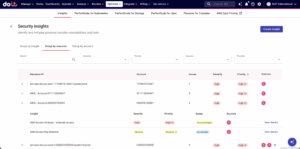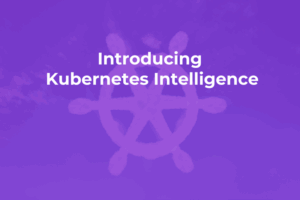What Is FinOps? The Key to Smarter Cloud Spending
Picture this: It’s the end of the quarter, and for the third month in a row, cloud costs have gone way over budget. Finance is alarmed by the unpredictability, while engineering teams are frustrated by the scrutiny they’re working under. Business leaders are caught in the middle, questioning whether rising cloud investment costs are worth it and delivering the expected value.
It’s a scenario that’s all too familiar for many companies operating in the cloud. This particular problem highlights the importance of FinOps—a set of practices that help organizations optimize their cloud spending without sacrificing innovation or performance. Cloud financials are fundamentally different from traditional IT spend, as cloud bills are usage-based and fluctuate daily or even hourly. That shift is part of what makes FinOps necessary.
As organizations increase their cloud adoption and usage, many are discovering a hard truth. Traditional financial governance models simply weren’t built for the dynamic, on-demand nature of cloud computing. This is especially true for companies using different cloud providers in multi-cloud ecosystems.
Financial operations, or FinOps, is a strategy that’s reshaping how organizations handle their cloud spending. It helps connect the dots between technical choices, financial results, and overall business goals.
What is FinOps?

FinOps is a cultural and operational framework that brings financial company-wide accountability to cost-effective cloud spending. FinOps lets cross-functional teams, including finance, engineering, and business stakeholders, collaborate on data-driven spending decisions. Rather than simply tracking cloud costs (and facing surprises), FinOps principles create a feedback loop of optimization and forecasting. This approach promotes operational excellence that better aligns technology decisions with business value.
Serving as the financial playbook for cloud operations, FinOps is an operating model that brings financial accountability to variable cloud infrastructure spend. By making cost management a shared responsibility across finance, engineering, and product teams, it brings together systems, best practices, and company culture to help businesses better understand and manage their cloud costs. Cutting expenses isn’t the sole focus, though. It’s more about spending smartly and getting the most value out of every dollar spent in the cloud.
Common misconceptions about FinOps
Many organizations misunderstand what FinOps truly entails, leading to several common misconceptions.
“FinOps is just for engineers”
Engineers play a big role in the FinOps process, but successful FinOps requires teamwork across departments to be successful. Finance teams bring budget know-how and oversight, while business teams provide insight into value and priorities.
Engineers contribute their technical skills to identify optimization opportunities. But the idea that FinOps is just for engineers often leads to isolated efforts that don’t align with business goals or get the broader organization on board.
“We don’t need FinOps if we have a cloud budget”
Simply having a budget doesn’t mean you’re managing cloud spend effectively. Cloud environments are dynamic, with costs that can change daily based on usage patterns, new service launches, and pricing changes.
A static budget, without continuous monitoring, analysis, and optimization from FinOps, can lead to either overspending or underutilization of resources. FinOps takes budgeting from an annual exercise and turns it into an ongoing optimization process with real-time visibility and control.
“Cloud cost optimization means cutting expenses”
This is perhaps the most dangerous misconception. The goal of FinOps isn’t to slash cloud spending indiscriminately but to maximize the value of every dollar spent.
Sometimes this means spending more on services that drive significant business outcomes while eliminating waste elsewhere. Establishing a cloud cost optimization culture requires balancing cost, speed, and quality—not just focusing on the lowest possible bill.
“FinOps = chargeback”
Many organizations assume that implementing FinOps automatically means implementing full chargeback models where teams are directly billed for their cloud usage. However, showback (nonpunitive attribution) is often a better early-phase approach before moving to full chargeback models. Showback helps teams understand their consumption patterns without the pressure of immediate financial accountability, allowing for education and gradual cultural change.
“FinOps is only about savings”
While cost reduction is one benefit of FinOps, this misconception overlooks its true purpose. FinOps is truly about maximizing ROI, which may include spending more in areas that drive product outcomes. Strategic investments in cloud resources that accelerate development, improve customer experience, or enable new business capabilities can deliver greater overall value, even if they increase short-term costs.
Why implement FinOps initiatives?

Beyond addressing the misconceptions above, FinOps initiatives can deliver several other benefits:
Financial predictability
FinOps practices enable more accurate forecasting and budgeting, reducing the “bill shock” that many organizations experience with cloud spending.
Operational efficiency
FinOps identifies unused or underutilized resources, helping teams clean up waste and optimize existing deployments for cost without sacrificing performance.
Faster decision-making
When teams have visibility into both costs and value through the use of dashboards, real-time alerts, and unit cost forecasting, they can make quicker, more informed decisions about resource allocation, new projects, and technology choices. The key here is “teams,” not just individual developers or managers.
Competitive advantage
Organizations that master FinOps can deploy new features and services more cost effectively than competitors, allowing for faster innovation with controlled spending.
Cultural transformation
Perhaps most importantly, FinOps drives a culture of cost awareness and accountability across teams. FinOps helps engineers manage cloud costs while staying focused on innovation.
How to assess your org’s readiness for FinOps
Before implementing FinOps, take a step back and evaluate where your organization stands in these key areas:
- Visibility: Do stakeholders have access to accurate, timely information about cloud costs? Can you trace costs to specific teams, products, or features?
- Accountability: Is it clear who owns what when it comes to cloud spending decisions? Are there established processes for reviewing and approving cloud resource requests?
- Optimization practices: Do you have regular processes for identifying waste and optimizing resources? Are rightsizing, reserved instances, and spot instances part of your strategy? Are cost optimization recommendations integrated into CI/CD pipelines, infrastructure-as-code (IaC) reviews, or tagged backlog tasks?
- Cross-team communication: How effectively do finance, engineering, and business teams collaborate on cloud spending decisions? Are there regular touchpoints for these discussions, or is it left to individual team members?
- Tools and automation: What FinOps tools do you currently use for cost visibility, allocation, and optimization? And are these integrated within your workflows?
- Maturity levels: Where in the FinOps “Crawl, Walk, Run” maturity model are you? Is your organization at the “crawl” stage (basic visibility and reporting), “walk” stage (cost allocation and basic optimization), or “run” stage (advanced forecasting and optimization)?
The more gaps you identify in these areas, the more deliberate your FinOps implementation strategy should be. Organizations with significant gaps may need to start with basic visibility and education before moving to more advanced practices.
The key principles of FinOps
Per the FinOps Foundation, effective FinOps frameworks are built on several fundamental principles:
- Teams need to collaborate. Finance, engineering, and business need to work together continuously, not just during budget cycles.
- Everyone takes ownership. Cloud cost management isn’t solely IT’s responsibility. All stakeholders should understand the financial impact of their cloud usage and the decisions they make within their role/team.
- A centralized team drives FinOps. While everyone participates, a dedicated FinOps team should establish practices, tools, and governance to keep everything standardized.
- Reports should be accessible and timely. Stakeholders need relevant cost data in formats they can understand when they need it.
- Decisions should balance cost and value. The goal is maximizing business value per cloud dollar, not minimizing spending at all costs.
- Continuous improvement is key. FinOps isn’t a one-time project. It’s an ongoing and ever-evolving practice of measurement and optimization.
- Automation should replace manual processes. As organizations mature in FinOps, they should automate tagging, reporting, and even optimization where possible.
What stakeholders should be involved in FinOps initiatives?

For FinOps to work well, it needs input from different teams across the organization, each bringing their own insights and expertise to the mix.
Finance teams lay the groundwork by setting budget guidelines, ensuring financial oversight, and translating technical metrics into clear business insights that executives can easily grasp. Working alongside them, engineering and operations teams handle the technical aspects of FinOps. They implement optimizations, ensure proper resource tagging, and design systems with cost efficiency in mind.
Platform engineering, specifically, is the team that can embed FinOps into infrastructure tooling via self-service portals and policy-as-code. Product management plays an equally important role, helping quantify the actual value delivered by cloud services relative to their costs.
Executive leadership’s involvement cannot be overstated. It sets the organizational tone for cost accountability and ensures FinOps initiatives align with broader business strategy, rather than becoming isolated technical exercises. Many organizations find it helpful to have dedicated FinOps teams that manage the process, analyze cost data, and drive optimization efforts across different departments.
If your organization has established a cloud center of excellence (CCoE), it should either lead FinOps initiatives directly or closely partner with the FinOps team to leverage existing governance structures. The mix of stakeholders might change depending on your organization’s size and structure. However, having a cross-functional team is important for breaking down silos and creating a unified approach to cloud financial management.
FinOps pitfalls and how to avoid them
Even the best-intentioned FinOps programs can hit roadblocks. Here are some common mistakes and tips on overcoming them:
- Overemphasis on cost cutting: Focus on optimizing value by looking at costs alongside business metrics and results. Understand the full picture of how cloud services are used and make sure they align with your business goals.
- Poor tagging strategies: Develop a comprehensive tagging strategy from the start to enable meaningful cost allocation and analysis.
- Too many tools, not enough integration: Pick tools that fit into your current workflows instead of adding completely new processes that your team might push back on. Doing so makes adoption easier and cuts down on training time.
- Overlooking cultural change: Invest in education and change management, not just tools. Establishing a cloud cost optimization culture can often be the most challenging but impactful aspect of FinOps.
- Too much too soon: Start with basic visibility and quick wins before attempting advanced optimization. This builds momentum, credibility, and trust, which helps create a FinOps culture.
- Ignoring the engineer experience: Design FinOps processes that make engineers’ lives easier instead of adding bureaucratic hurdles. For example, provide cost estimates during development rather than after deployment.
- Failing to close the feedback loop: Make sure insights lead to actions and that teams receive recognition for successful optimization efforts.
- Missing baseline metrics: Without establishing initial performance and cost benchmarks, it’s impossible to measure improvement or demonstrate ROI. Define and document baseline metrics before implementing changes to effectively track progress and identify what’s working.
- Forgetting to review pricing model shifts: Cloud providers regularly update their pricing models and introduce new discount options. Failing to keep up with these changes could mean missing out on some big cost-saving opportunities. Make regular pricing reviews a key part of your FinOps routine.
- Over-automation without review: While automation can drive efficiency, implementing cost-saving automation without regular human review can lead to unintended consequences. Make sure automated processes have checkpoints for human validation and a review of their impact on the business.
How to measure the success of your FinOps efforts
Now, how do we know if our FinOps efforts are successful or not? Here are a few metrics that can help measure the success of your FinOps practices:
- Cloud cost per revenue unit: Tracking cloud spend compared to revenue is a great way to tell the difference between smart growth spending and inefficiencies.
- Budget vs. actual cloud spend: Measuring forecast accuracy helps finance teams trust cloud spending plans.
- Percentage of untagged or unallocated resources: This metric indicates how well you can trace costs to specific business activities and helps identify areas for optimization.
- RI/SP coverage: What percentage of your reserved instance/savings plan–eligible spend is covered by a discount program? This is the lowest-hanging fruit in saving money and should be a priority metric for any FinOps program.
- Optimization coverage: The percentage of your environment that has undergone optimization review and implementation.
- Time to detect anomalies: The speed at which you can identify and respond to unexpected spending increases.
- Engineer time spent on cost management: Efficient FinOps should reduce, not increase, the time engineers spend on cost-related tasks.
- Business value metrics: Connecting cloud spending to business outcomes like customer acquisition cost, feature delivery speed, or service reliability.
Ultimately, cloud FinOps success isn’t just about trimming the cloud bill. The goal is to make smarter decisions with your cloud resources and maximize every dollar you spend.
Driving success through smarter cloud spending
FinOps is changing the way organizations approach cloud financial management. Rather than treating cost as an afterthought or periodic concern, FinOps brings financial accountability into the mix of daily operations and overall data-driven decision-making.
By implementing FinOps practices, your organization can transform cloud spending from an unpredictable expense to a strategic investment with measurable returns. The process takes teamwork, a cultural shift, and following best practices. But the rewards—cost savings, better financial predictability, and increased business value—make it all worth it.
For more, grab our Adopting FinOps ebook, which covers everything from how to assess whether you’re ready for FinOps to how to get buy-in from your organization.



